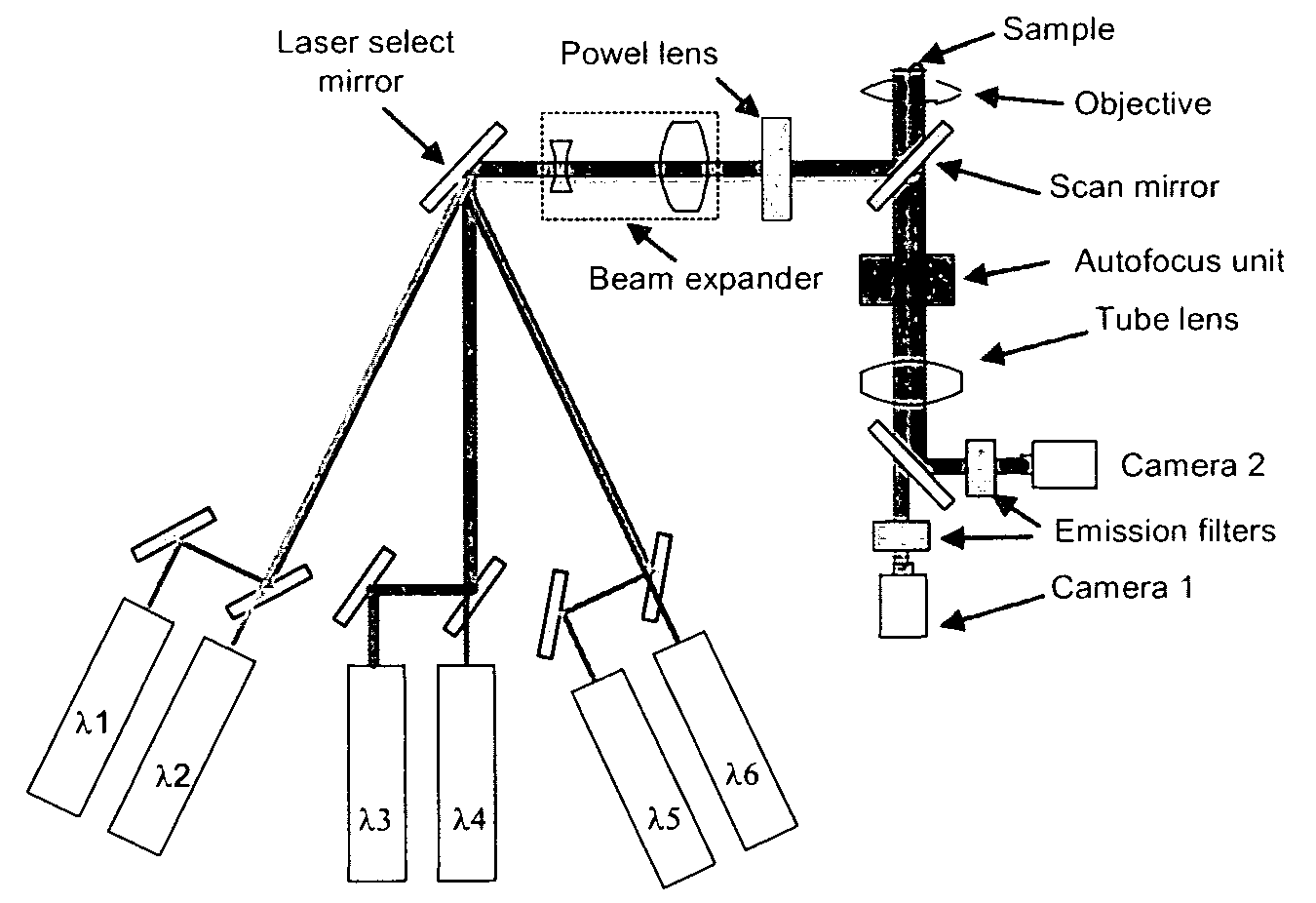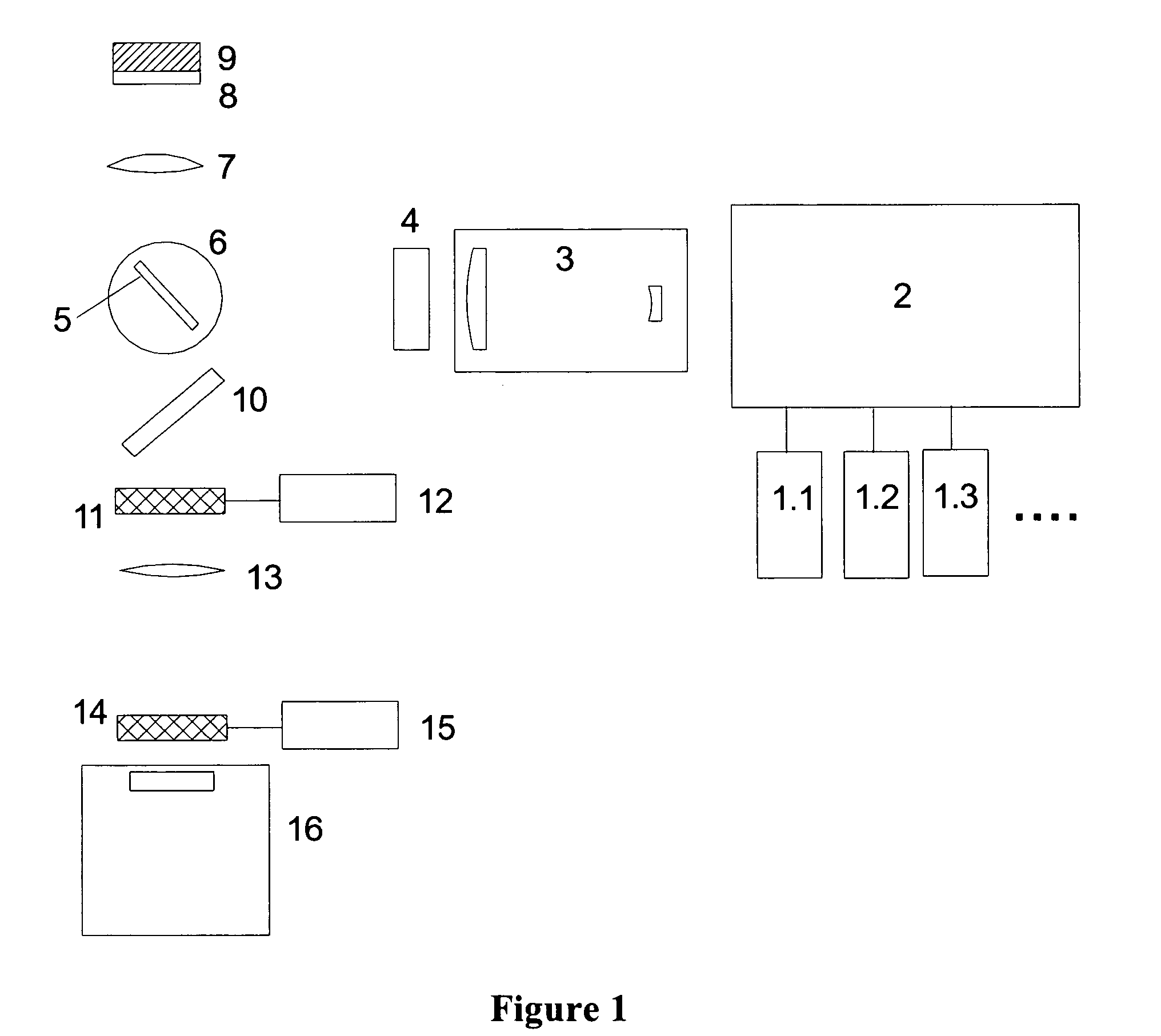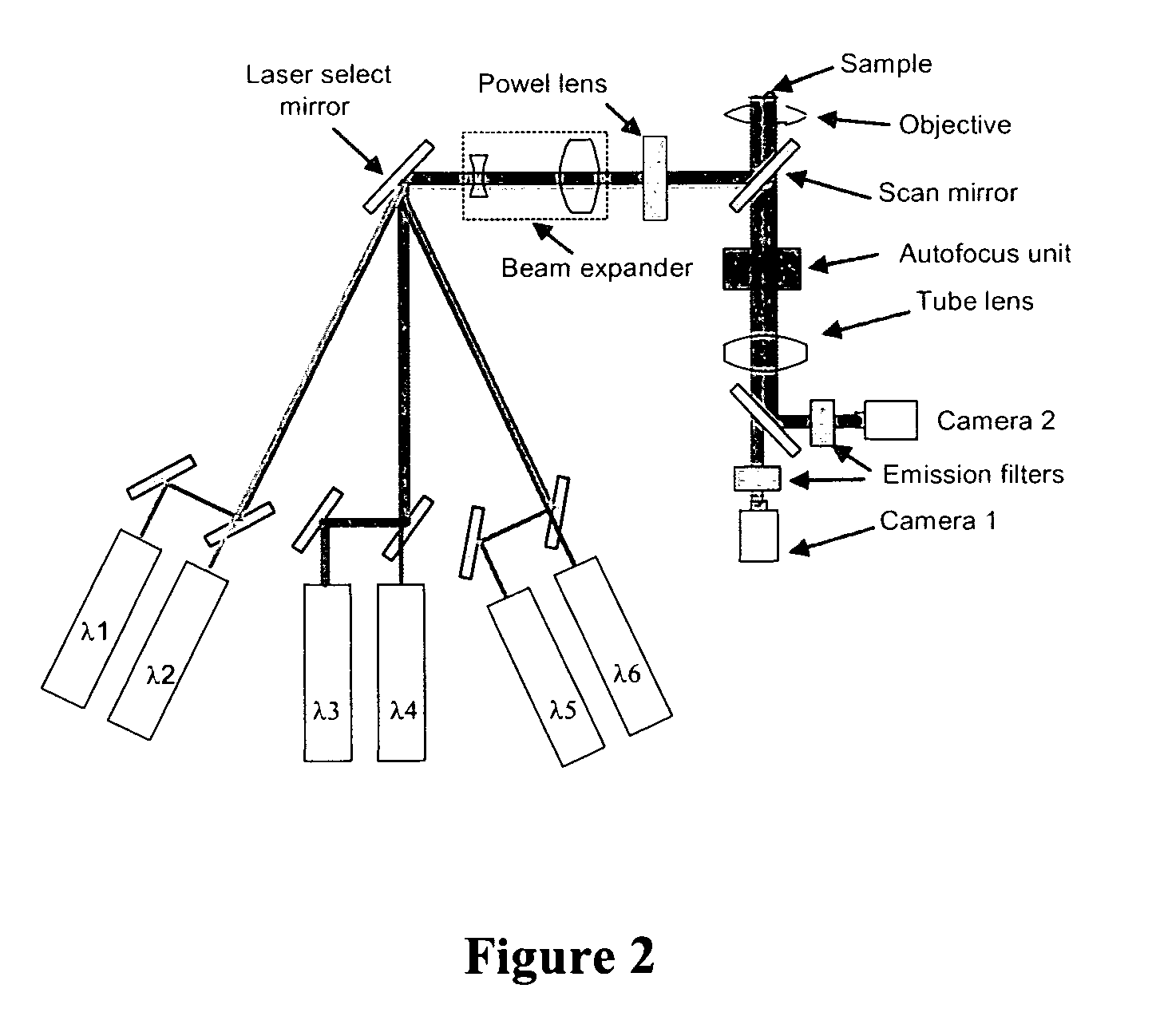Method and apparatus for fluorescent confocal microscopy
a fluorescent confocal microscope and fluorescent confocal technology, applied in the field of methods and apparatus for fluorescent confocal microscopes, can solve the problems of reducing the ability, unsatisfactory background fluorescence, signal noise, etc., and achieve the effect of improving the confocal fluorescence microscop
- Summary
- Abstract
- Description
- Claims
- Application Information
AI Technical Summary
Benefits of technology
Problems solved by technology
Method used
Image
Examples
Embodiment Construction
[0027]The instant confocal imaging system described previously, is schematically presented in FIG. 1, and includes, as described previously one or more light sources to excite a fluorescent (or fluorescently stained or labelled) target and a one or more detectors to detect fluorescent emissions. The system may contain other components as would ordinarily be found in confocal and wide field microscopes. The following sections describe these and other components in more detail. For a number of the components there are multiple potential embodiments. In general the preferred embodiment depends upon the target application. For the purpose of this document the preferred target application is a high throughput cellular screening with the ability to image a wide range of fluorophores.
Description of Components
Laser Sources
[0028]While the light source can, as described previously, be any source capable of delivering light of the excitation wavelength to the target, preferably one or more exc...
PUM
| Property | Measurement | Unit |
|---|---|---|
| thickness | aaaaa | aaaaa |
| thickness | aaaaa | aaaaa |
| focal length | aaaaa | aaaaa |
Abstract
Description
Claims
Application Information
 Login to View More
Login to View More - R&D
- Intellectual Property
- Life Sciences
- Materials
- Tech Scout
- Unparalleled Data Quality
- Higher Quality Content
- 60% Fewer Hallucinations
Browse by: Latest US Patents, China's latest patents, Technical Efficacy Thesaurus, Application Domain, Technology Topic, Popular Technical Reports.
© 2025 PatSnap. All rights reserved.Legal|Privacy policy|Modern Slavery Act Transparency Statement|Sitemap|About US| Contact US: help@patsnap.com



